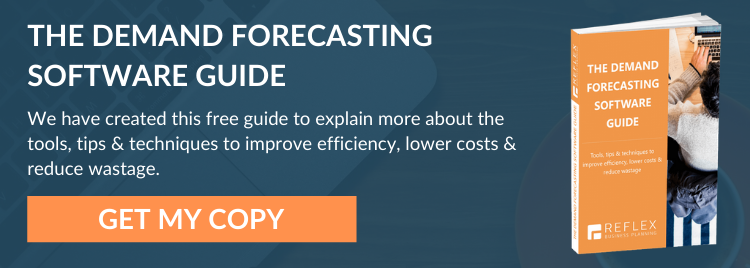Being able to predict sales figures and strategising for periods of peak customer demand is central to a business’s success, as effective planning ensures an uninterrupted supply chain, low costs, competitive prices, and satisfied customers. Poor planning damages operations, restricts growth, and harms your reputation in the marketplace. Accurate forecasting is, therefore, essential. If your business model is due a review, take time to consider the potential implications of poor forecasting, to ensure your organisation doesn’t fall into the trap of not anticipating the future accurately.

Unstable Inventory
poor forecasting hits inventory harder than any other part of the business. Inaccurate sales predictions or failing to anticipate surges or troughs in customer demand can lead to an undersupply or oversupply of inventory, both of which can have negative consequences.
An undersupply of products erodes customers’ confidence, reduces profits, and hands a golden opportunity to competitors to fill the gap in the market. An oversupply increases inventory costs, as well as creating an imbalance between the cost of production and sales receipts. Either way, inventory problems caused by poor forecasting can seriously affect a business’s cashflow and profit margins.
Deteriorating Supplier Relationships
poor forecasting is not merely a problem in-house but can cause significant relationship issues with suppliers upstream. Within the supply chain, every business manages its forecasting and bases its marketing, sales, and growth strategy on its predictions. If one player within the supply chain relies on an inaccurate forecasting model, it can cause a ripple effect through the entire supply chain, affecting the relationship between each party and potentially resulting in the loss of generous discounts or contracts. Furthermore, if a supplier finds that its forecasts are inaccurate as a result of a partner’s shortcomings, it may cease to rely on its predictions, meaning significant problems for the chain when forthcoming issues are overlooked.
Increased Expediting Costs
For manufacturers, underestimating demand can cause inflated expediting costs to secure the rapid supply of raw materials. If the materials or components necessary for manufacturing are not pre-ordered, and a surge in demand means the production line needs to step up, a business may have no choice but to pay additional fees to ensure their timely delivery – or else risk losing profitable orders altogether. Accurate forecasting would anticipate the likely demand for a product so that a manufacturer could obtain the appropriate amount of raw materials at the most cost-effective price.
Poor Cash Management
In many businesses, investment in stock is key to cash flow management. Get this wrong and you could end up running out of cash for vital things like paying your people! With accurate forecasts, you can predict what inventory levels you need, how inventory will be consumed, and therefore how much cash will be generated through sales. You will not end up with unnecessary cash tied up in products that simply gather dust in your warehouse.
What Next?
Improving your business’s forecasting model should be a priority to prevent the ramifications from adversely affecting your profits. At Reflex Planning, we offer a free demo of our world-class business forecasting software that could transform your company’s approach to understanding its market and its ability to make decisions, so get in touch to find out more today!

